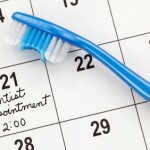 Have you ever experience terrible toothache especially coming from your wisdom teeth? Getting sleepless nights due to the pain? The soreness that made you lose your appetite and you do not wish to talk. You are having bad mood swings and your daily work got disrupted all because of the little tooth from the back of your mouth? These are all the warning signs to visit your dentist right away and get the tooth removed!
Have you ever experience terrible toothache especially coming from your wisdom teeth? Getting sleepless nights due to the pain? The soreness that made you lose your appetite and you do not wish to talk. You are having bad mood swings and your daily work got disrupted all because of the little tooth from the back of your mouth? These are all the warning signs to visit your dentist right away and get the tooth removed!
When it comes to removing your wisdom teeth, most people will avoid getting it done because of the fear of pain. Some choose to rely on painkillers to get through each day but refuse to go to the dentist. Fret not, here are the 10 simple steps to the pain-free wisdom teeth removal you will ever have!
1. Have a good meal before you go for your dental appointment. Food will ease the anxiety and stress build up. Sometimes, the procedure might take about an hour or so, therefore it is best to avoid being hungry during or after the procedure.
2. Bear in mind that wisdom teeth removal is unlike the normal routine teeth removal. You can expect a modest amount of swelling in the area of the procedure and including on the face for 3 to 4 days. The swelling may tend to wax and wane, occurring more in the morning and less in the evening because of your postural variation. However, everything will completely dissipate by about 5 to 7 days.
3. Take your first dose of painkillers e.g. Panadol, Ponstan right after the procedure. This is to allow the medication to take effect ahead before the sedative (given by your dentist via injection) wears off. Continue to take it for 3 to 5 days on a routine basis because you may have some mild soreness in the region for 1 to 2 weeks after the procedure.
4. Use ice packs on the face once you are back from your appointment; for 20 minutes and then left off for 20 minutes. As the swelling usually reaches its maximum 24 to 88 hours after a surgical procedure, ice packs help to minimize the swelling and they make you feel more comfortable! Even so, Ice should not be placed directly on the skin, but rather wrap the ice in a layer of dry cloth to prevent superficial skin damage.
6. Treat yourself to your favorite ice-cream, a flavored Popsicle or a cold milkshake! Food on the first 12 hours should be soft and cool. Solid foods will tend to reinitiate bleeding and cause trauma to the surgical area.
7. Keep to a soft diet for several days before you return to your normal diet. Â Remember to have adequate fluid intakes every day, usually at least 2 quarts. It can be juices, milk, water or any other beverage that appeals to you.
8. Gently rinse with warm salt water frequently on the first 24 hours to help reduce the swelling and stop any bleeding.
9. Keep your teeth and mouth reasonably clean will result in a more rapid healing of the wounds. Gently brush your teeth that are away from the area of surgery in the usual fashion but avoid brushing the teeth immediately next to the removal site. You may also use commercial mouthwashes e.g. Listerine as an additional oral hygiene aid.
10. You may experience some difficulty to open your mouth (trismus)Â due to the wisdom teeth removal. Do not worry; this is a normal inflammation response to your facial muscles as a result of a surgical procedure. Use moist heat or hot towel to resolve the problem! Keep it in close contact with your skin so that the heat transfer will be most effective.
A follow-up visit after 1 week is usually necessary. However, if you notice your swelling begins to increase in size with pain on the third day after the procedure or later, you can assume to have developed an infection until this is proven otherwise. In this case, you should call for an appointment at your dentist’s office as soon as possible.


